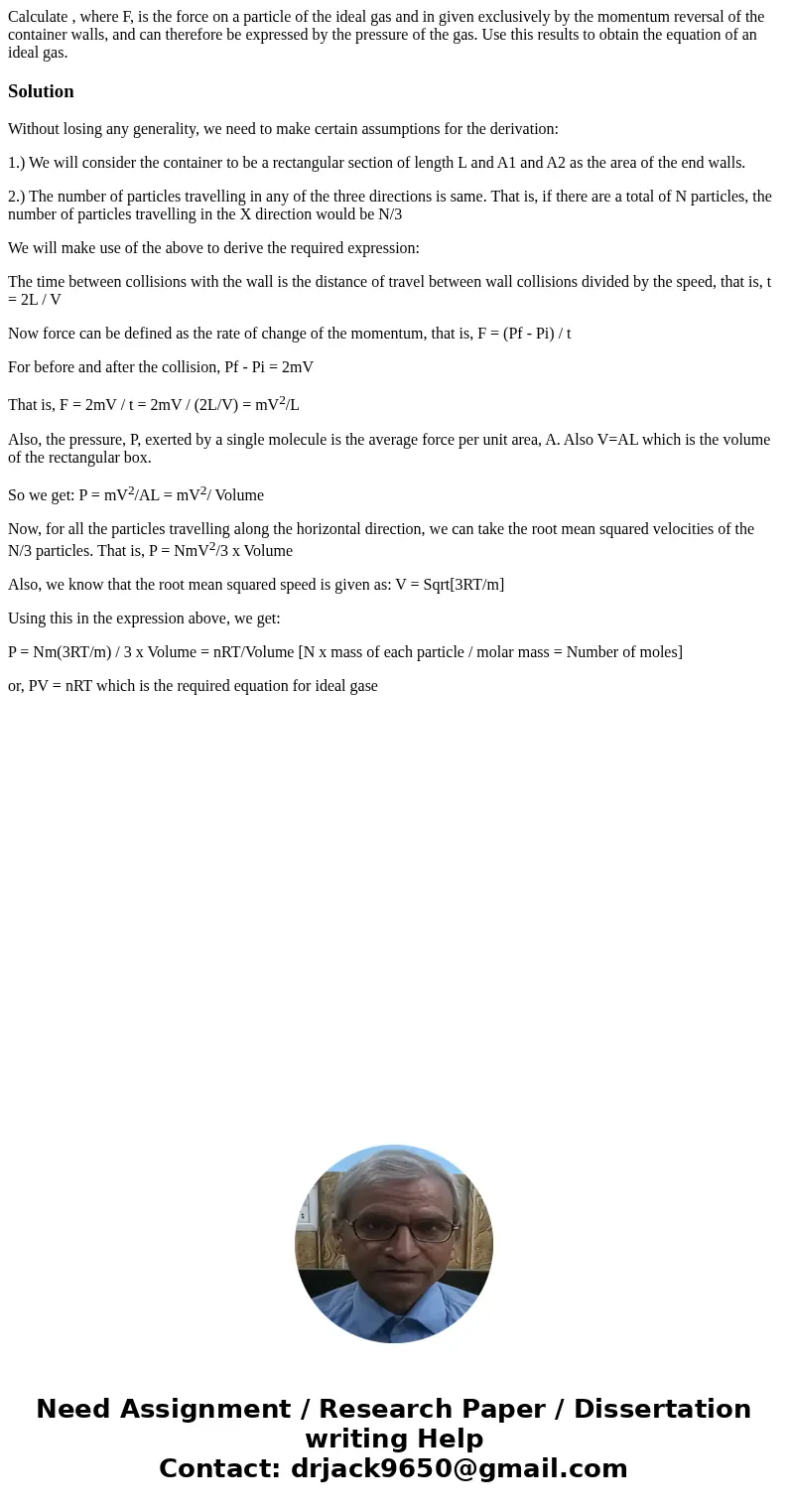Calculate where F is the force on a particle of the ideal g
Solution
Without losing any generality, we need to make certain assumptions for the derivation:
1.) We will consider the container to be a rectangular section of length L and A1 and A2 as the area of the end walls.
2.) The number of particles travelling in any of the three directions is same. That is, if there are a total of N particles, the number of particles travelling in the X direction would be N/3
We will make use of the above to derive the required expression:
The time between collisions with the wall is the distance of travel between wall collisions divided by the speed, that is, t = 2L / V
Now force can be defined as the rate of change of the momentum, that is, F = (Pf - Pi) / t
For before and after the collision, Pf - Pi = 2mV
That is, F = 2mV / t = 2mV / (2L/V) = mV2/L
Also, the pressure, P, exerted by a single molecule is the average force per unit area, A. Also V=AL which is the volume of the rectangular box.
So we get: P = mV2/AL = mV2/ Volume
Now, for all the particles travelling along the horizontal direction, we can take the root mean squared velocities of the N/3 particles. That is, P = NmV2/3 x Volume
Also, we know that the root mean squared speed is given as: V = Sqrt[3RT/m]
Using this in the expression above, we get:
P = Nm(3RT/m) / 3 x Volume = nRT/Volume [N x mass of each particle / molar mass = Number of moles]
or, PV = nRT which is the required equation for ideal gase

 Homework Sourse
Homework Sourse